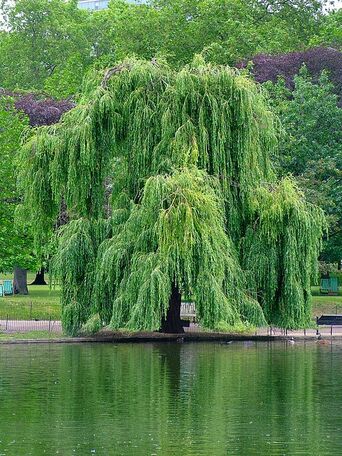
Elementary General Music: An Ecological Approach
This week I’m substitute teaching elementary general music at a school where I subbed two months ago. I began today's lesson with a song I taught the children last time, as an intro—Sarah Pirtle’s “My Roots Go Down,” in which students choose plants and their ‘nature’ to make up verses. Examples students created today include, “oak tree, tall and strong,” “sunflower, bending with the sun,” “rose bush, I have thorns,” and “palm tree, relaxing on the beach.” These student-generated verses are probably one of the students’ favorite parts of singing this song, and we then talked about what plants they were most like. Some people are tall and strong, and others bend with the sun. Still others a beautiful but have thorns, and others are chill, relaxing as if on a beach.
I followed this song with another, David Mellet's "The Garden Song," which is a folk song about gardening, reflecting on crows, rain, dreams, and praying for the magical growth that all gardeners experience each year. After talking with students about plants, I play piano in a Dalcroze-inspired dance based on the growth of a seed. Students begin by being a seed, safe beneath the autumn leaves, and the ice and snow not touching the warmth below. When the March rains begin, they sprout, slowly and cautiously; grow leaves and eventually a bud, which flowers. I ask them to imagine the pedals without saying the color—yellow or orange, a light blue or dark purple, a deep red or a gentle pink. Any color really; and then their neighbors can guess the pedal colors. They can correct their friend, and then the students dance as flowers in the summer sun. But every year summer ends, and as chilly autumn winds come, the flowers drop one pedal at a time, and eventually drops seeds, which are covered by autumn leaves beneath the winter chill, windy snows and warmer weeks. This is where the song began. I go through two years so students have an opportunity to grow twice; and to choose two different colors for their pedals.
After this, we did a song called “The Willow,” which is in the old MacMillan book, The Spectrum of Music (I'm singing this one because I cannot find it on the internet). It’s written by Daisy Ward-Steinman. The Willow has a haunting melody with descending, chromatics echoing the shape of a willow tree’s branches. Rather than representing what it’s like to be a willow, which we experienced in “My Roots Go Down” and in the improvised seed dance, The Willow invites students to reflect on a relationship between a specific willow and the human singer resting beneath it on a summer day.
“I love the weeping willow where I spend my summer days.
Its thirsty roots my pillow. Its roof a leafy maze.
With feathery arms entwining, it bends to touch its toes.
A moving picture tracing on the carpet where it grows.”
I love doing this song in January because it helps students who are like me and have challenges with seasonal affective disorder, seasonal melancholy; and benefit from imagining themselves in warmer, brighter, less-test-focused, summery days.
ds
Link to the image: https://upload.wikimedia.org/wikipedia/commons/thumb/b/b8/Willow.jpg/640px-Willow.jpg
 RSS Feed
RSS Feed
